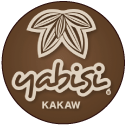 This response, Brady travels to Puerto Rico to learn more about cacao growing on the island and to hear what is on the mind of a grower starting out and striving to revitalize fine flavor cacao. Here Jose Crespo de Leon shares his thoughts with Brady while exploring the farm. We are especially pleased to share this man’s story knowing there are many others around the globe working towards a similar goal.
This response, Brady travels to Puerto Rico to learn more about cacao growing on the island and to hear what is on the mind of a grower starting out and striving to revitalize fine flavor cacao. Here Jose Crespo de Leon shares his thoughts with Brady while exploring the farm. We are especially pleased to share this man’s story knowing there are many others around the globe working towards a similar goal.
On a road traversing the lush Corozal Mountains, located in the central-eastern region of Puerto Rico, you’ll find José Crespo de Leon’s cacao farm. Four years ago, Crespo de Leon moved back onto family-owned land and has since left a career in technology to further the cultivation of sustainable fine flavor cacao on the island.
Although he is working independently, the foundation of his experiments is the research of Ricardo Goenaga and others at the Tropical Agricultural Research Station (TARS) at the University of Puerto Rico in Mayaquez. With the help of Goenaga and Brian Irish at TARS, Crespo de Leon was able to obtain initial scions of wood of the TARS clones and some rootstock seeds to get started. TARS is Puerto Rico's federal research station that currently locates and samples cacao trees for genetic surveying. TARS selected nine superior clones for high yield and superior flavor that were evaluated organoleptically at Guittard Chocolate Company in California. All nine of the TARS clones can be found among the trees Crespo de Leon has planted along the slopes of his family’s land. Crespo de Leon’s vision for the future is not just a high-yielding cacao, but he has a vision for preserving and revitalizing fine flavor cacao within a sustainable mixed food forest.
Before the 1670's cacao was an export crop for Puerto Rico, around that time what is believed to have been a hurricane destroyed its production. Cacao farming was all but abandoned. Luckily, some of the descendants of those trees still exist throughout the island and are being used as genetic source material for desirable traits.
Crespo de Leon was inspired to grow cacao by Mott Green's cacao farming initiative in Grenada and the creation of The Grenada Chocolate Company. Although he never met Green in person, he has visited Grenada to study and learn from his model of both growing cacao and chocolate making on the same site. Crespo de Leon is not the first with this idea in Puerto Rico. Cacao Arabuco, Loiza Dark, Finca, and the most established Cortes have been making bean-to-bar chocolate in Puerto Rico. Four generations of the Cortes family have led the way for chocolate production in the region. They produce an 80% Puerto Rican origin in their Forteza line of chocolate bars with TARS clones grown by a small group of farmers.
Despite growing interest in Puerto Rico's cacao crop, there are forces working against it. The support structure for mass exportation of cacao isn't there. Puerto Rico's economy is shifting toward industry, resulting in a declining agricultural workforce, and, for the remaining farmers, sugar and fruits have proven more profitable.
For these reasons, Crespo de Leon is focusing on agroforestry with fine flavor cacao grown without chemical fertilizers and pesticides. Fine flavor cacao should bring higher profits and could be an incentive for other farmers to add cacao to their crops. Crespo de Leon believes the future lies in cultivating fine flavor cacao that is being rediscovered on the island. Most of Crespo de Leon's cacao trees are from various populations of forastero but he is always searching out criollo trees on the island, like the ones he found near a farm in Corozal, that have desirable flavor and production characteristics. Although the criollo yield is low, there are other trees with some phenotype characteristics of a criollo and better yield. He has taught himself to graft and has a nursery of hundreds of young trees waiting to be planted. He also holds workshops for farmers interested in cacao and the role they can play in its revitalization. All the trees he has planted are labeled from TARS selection and are traceable. When his trees begin producing pods he will perform organoleptic testing of his own.
Crespo de Leon is considering producing his own chocolate. Even though most of his trees are young and years away from large harvests, he experiments with microfermentation, in boxes he constructs from local wood. He sundries cacao on a patio overlooking the valley. Always monitoring the results with the aim of one day using technology to optimize the process according to the bean type and conditions. When the beans have reached the desired fermentation, he then can produce small test batches of chocolate in his farm kitchen. Crespo de Leon seems hardwired to create things on his own and this trait is a perfect match for the craft chocolate movement. He has started to research small batch chocolate makers in hopes that when his trees mature he’ll find the right match between chocolate maker and fine Puerto Rican-grown cacao.
Crespo de Leon's passion shines in his eyes and rings in his voice when he talks about his cacao cultivation project, and he backs up that passion and excitement with hard work and creativity, boding well for a successful venture. He is implementing an agroforestry system that aims to create food forests polycrops that promote biodiversity, sequester carbon, save water and provide cacao trees with appropriate shade. In his own words, “In some sense, cacao is an awesome by-product of a bigger mission”.
